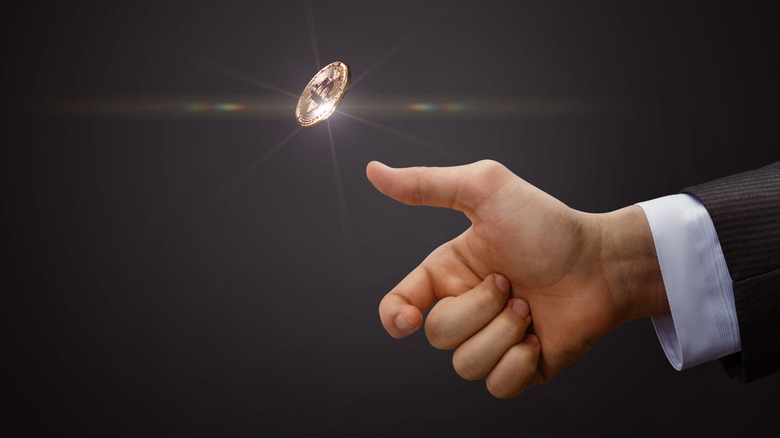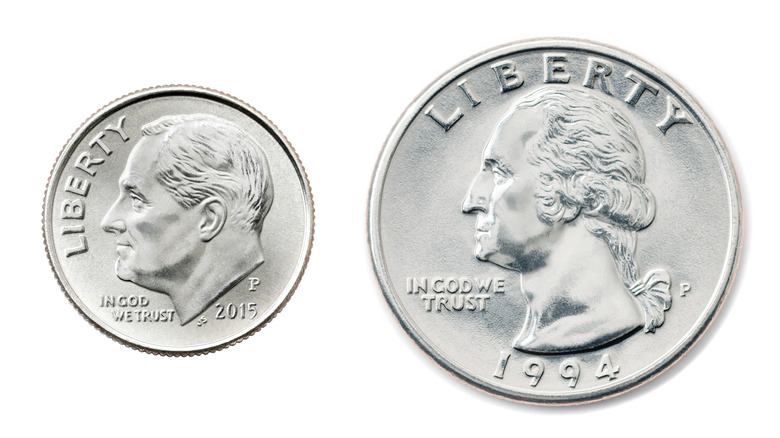Are The Odds In Flipping A Coin Really 50/50?
For as long as coins have existed, people have been using them as a sort of shortcut to making decisions based on chance. Can't decide whether or not to do A or B? Flip a coin. Assign heads to A, tails to B, toss the coin in the air, and whatever side lands face up, that's what you do. While it may seem trivial, some important decisions have been made via the flip of a coin. For example, as CNN reports, over the years several local elections, in cases where the votes were tied, were determined by the flip of a coin.
You would think that a coin flip would be the height of randomness. After all, there are only two possibilities: heads or tails. Theoretically, that should mean that a coin flip is always a 50/50 proposition. However, the reality is that randomness is hard to recreate in real life, as Live Science explains, and coins are not minted with attention paid to randomness. As such, there is a slight bias in coin flips, and over thousands or tens of thousands of flips, a pattern emerges.
The odds favor the side that's facing up when you start
Back in 2004, as Mental Floss reports, a team of scientists from Stanford and the University of California-Santa Cruz decided to set up an experiment to determine if coin tosses are truly random. They are not. Long story short: Whichever side is facing up when the coin is flipped has a slight advantage when it comes to the final outcome. Specifically, the side that's facing up will be the winner 51 percent of the time, assuming the coin is if caught in the air. If it lands on the floor, well, all bets are off (no pun intended). As Science Focus explains, back in 2008 a Polish team looked at things even further and determined that there may be a bias in flipped coins caught mid-air, but when they hit the ground, chaos takes over.
It's also important to consider that, unlike machines used in a casino (such as a roulette table), coins aren't manufactured to mitigate bias, and one side or the other may be slightly heavier, affecting the odds. And of course, there are millions of different coins. Indeed, in the U.S. alone, the government has manufactured over 100 different coin styles.

